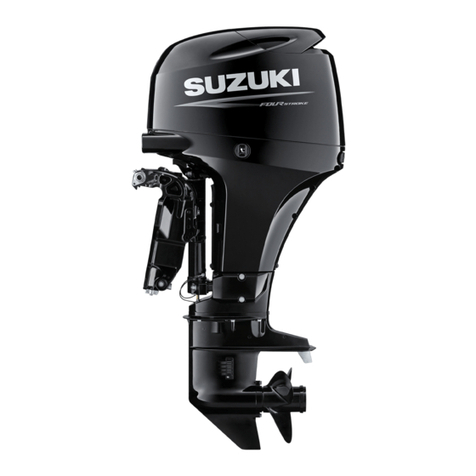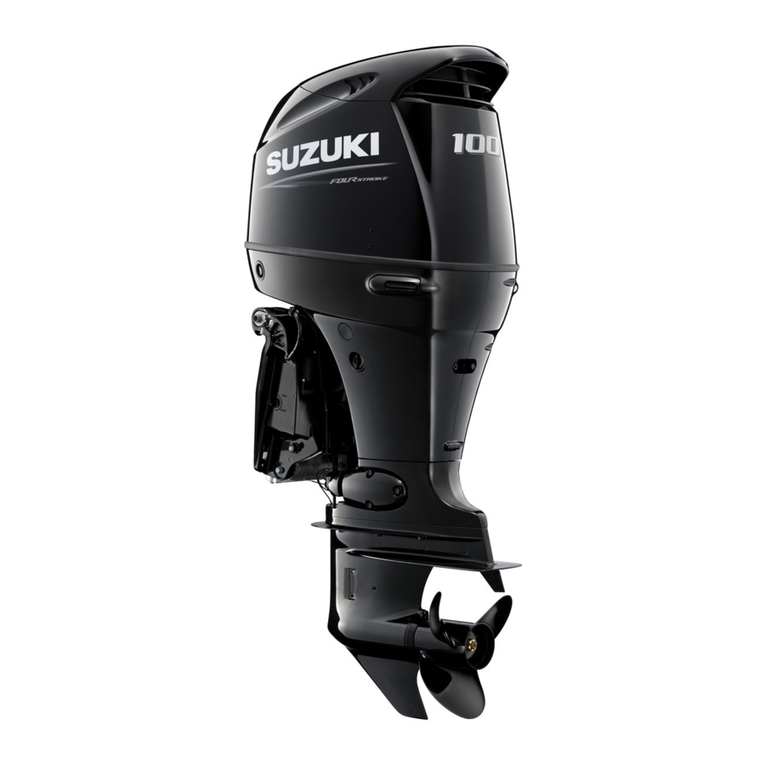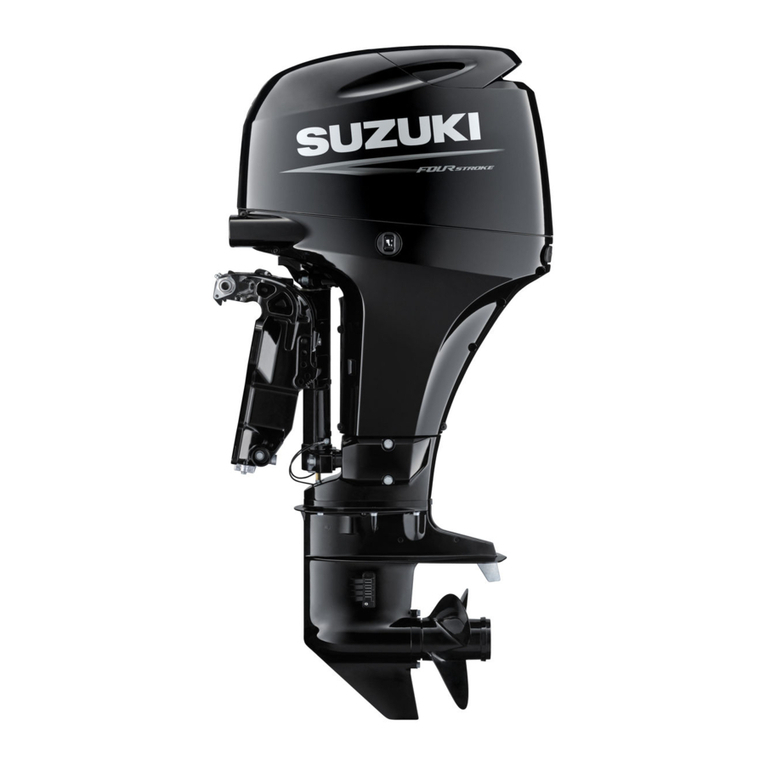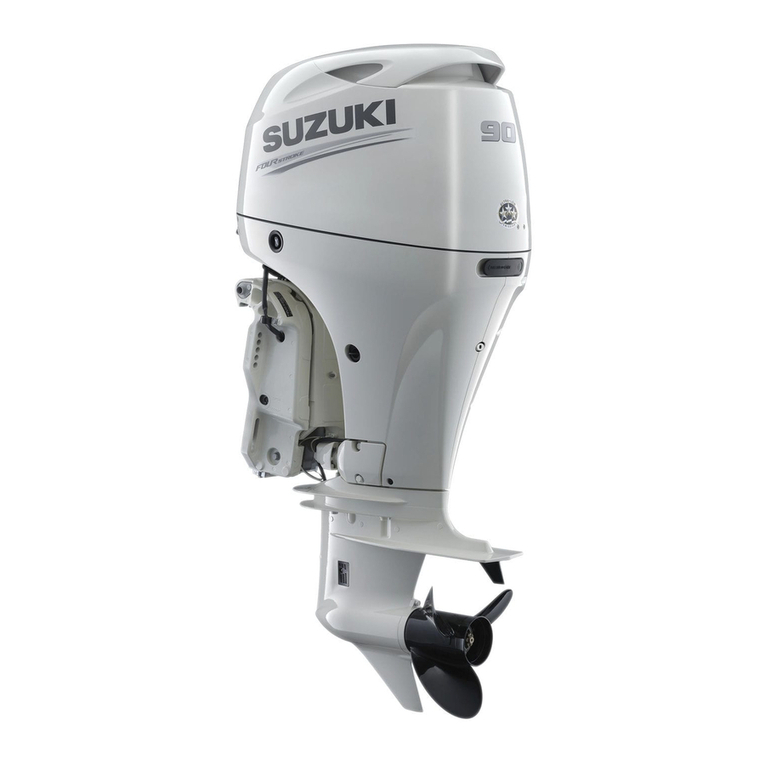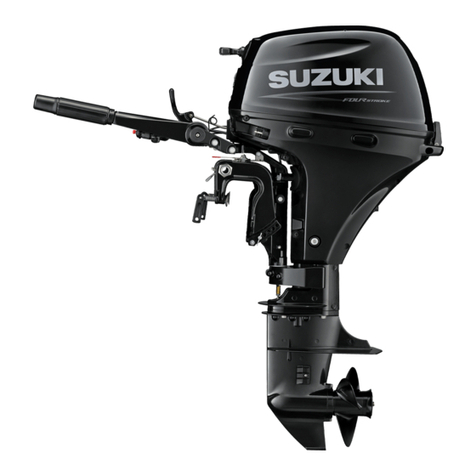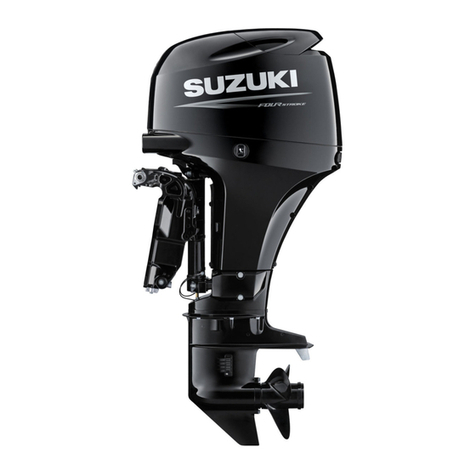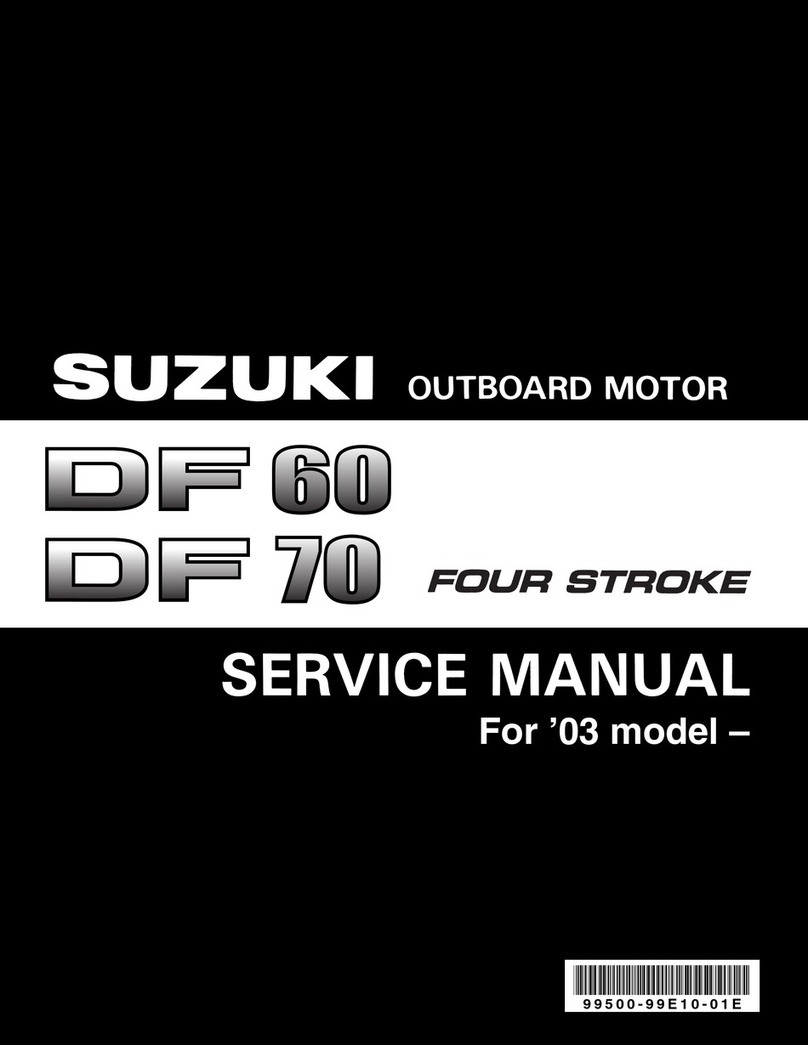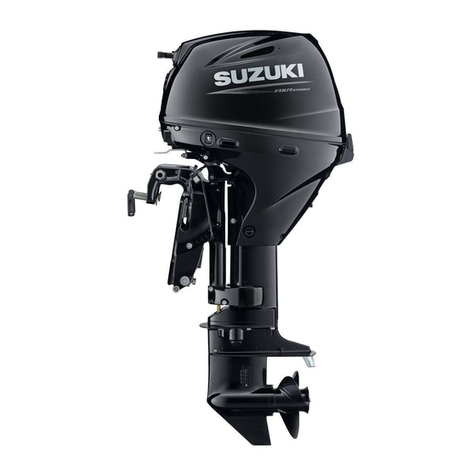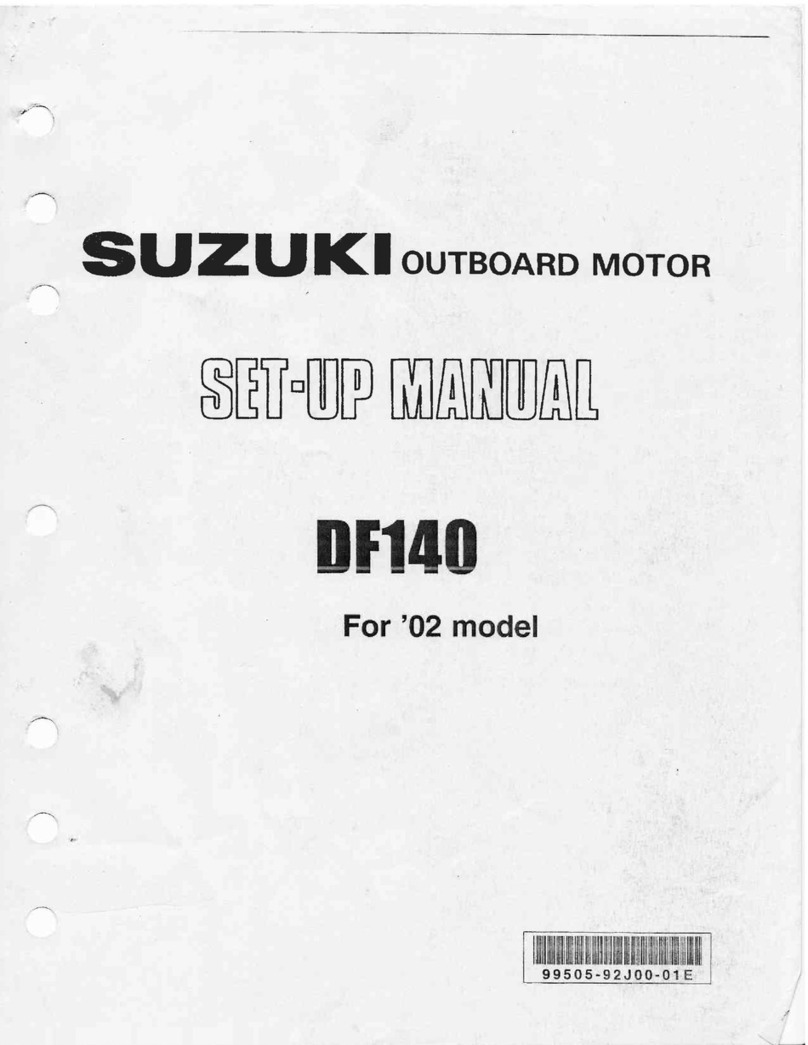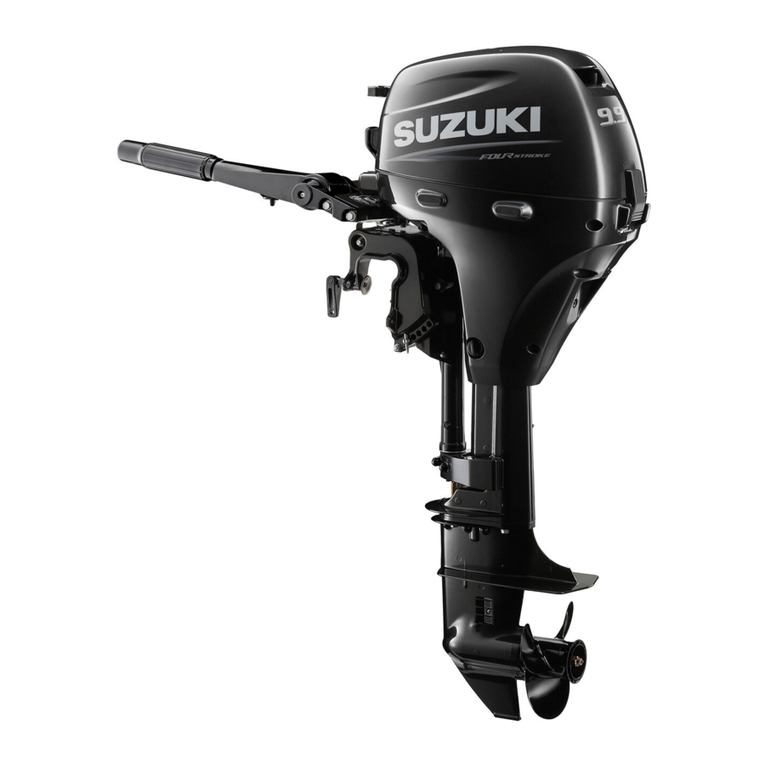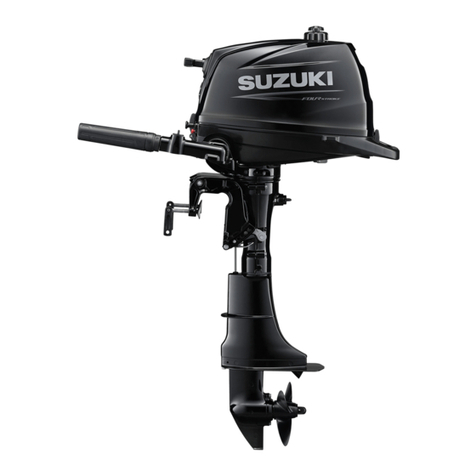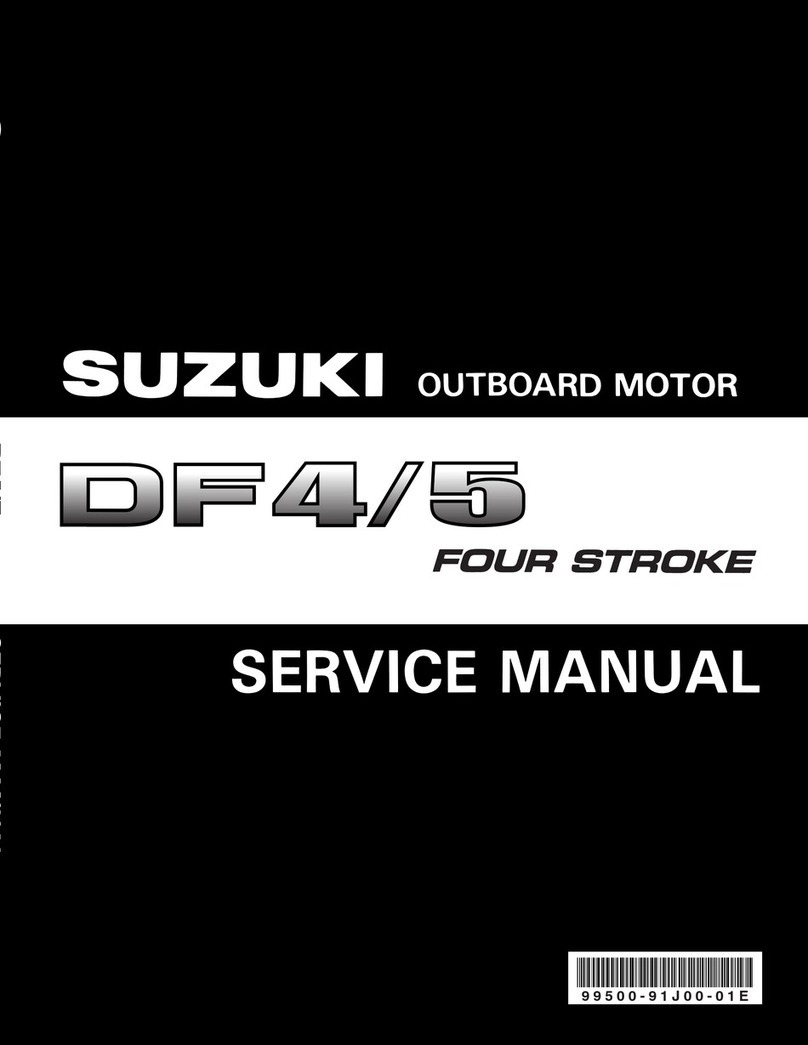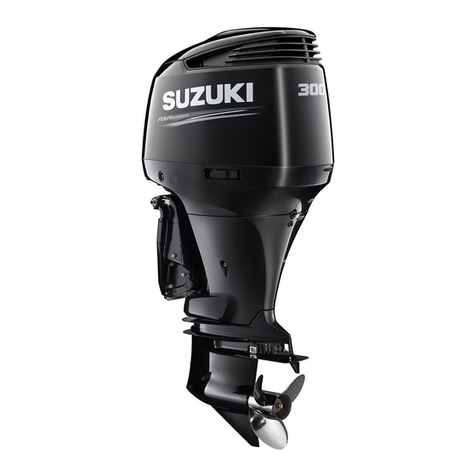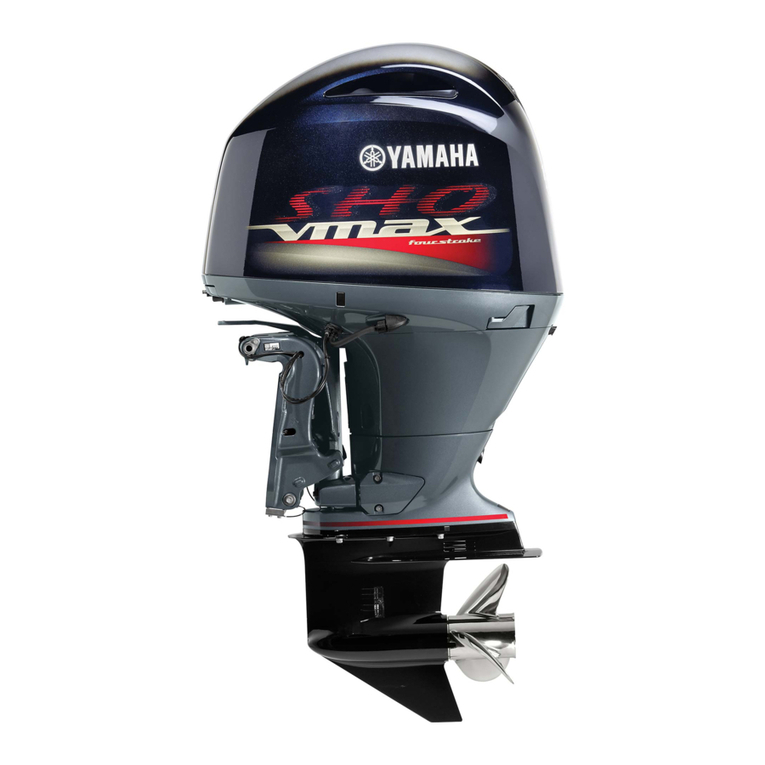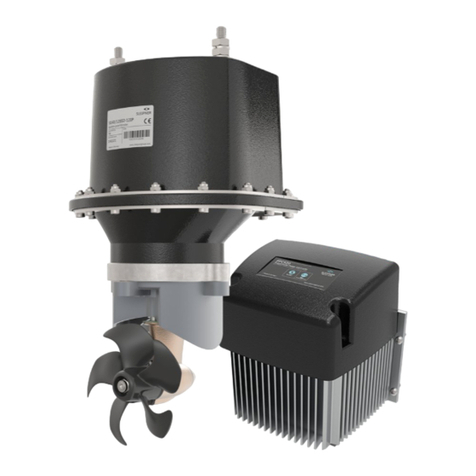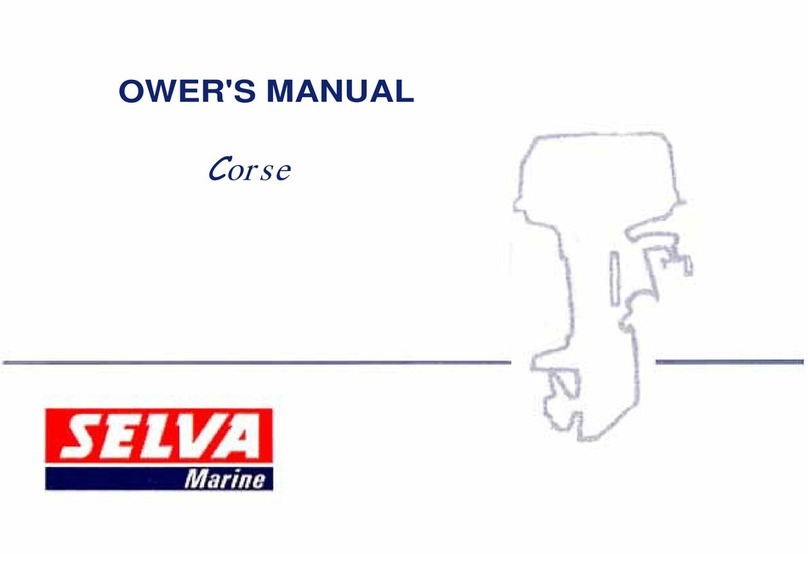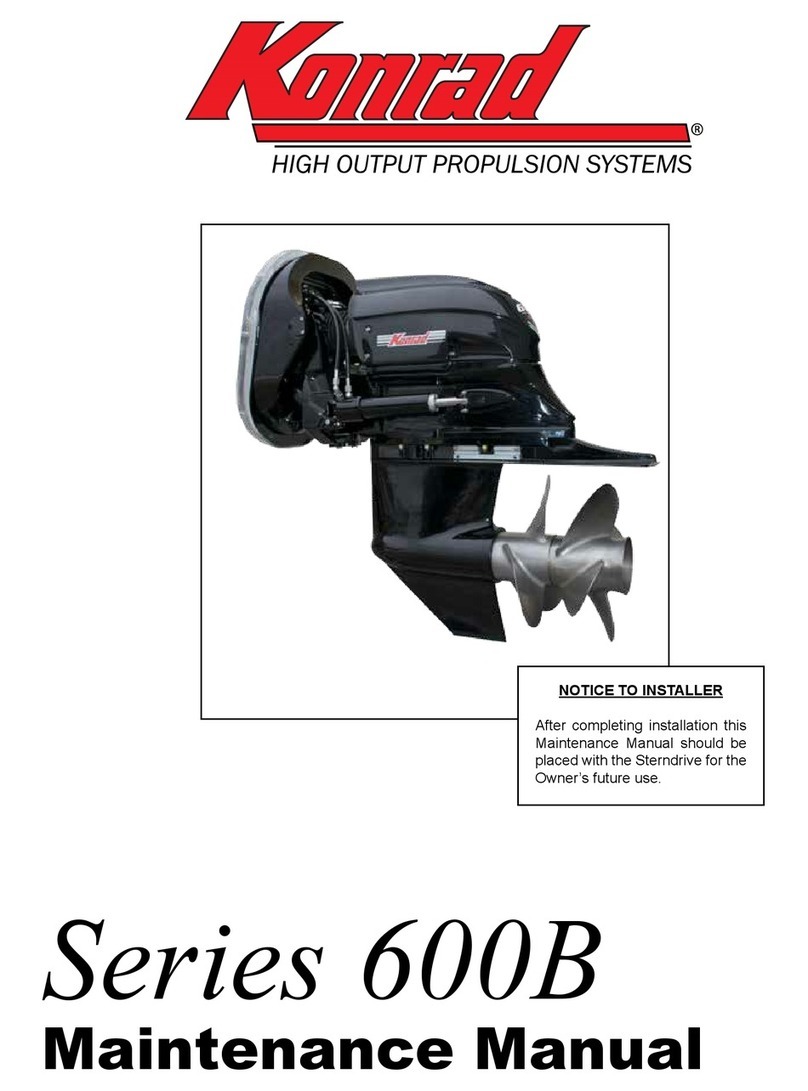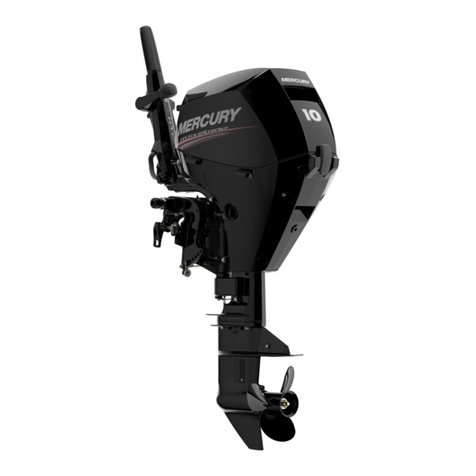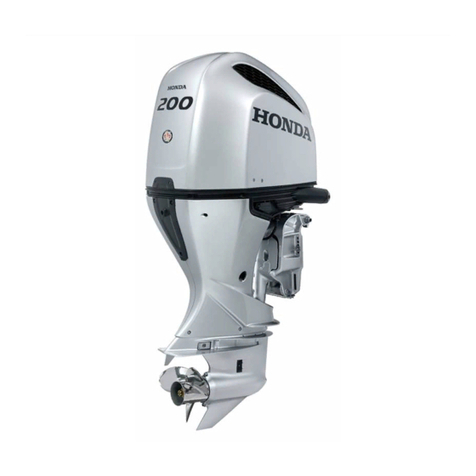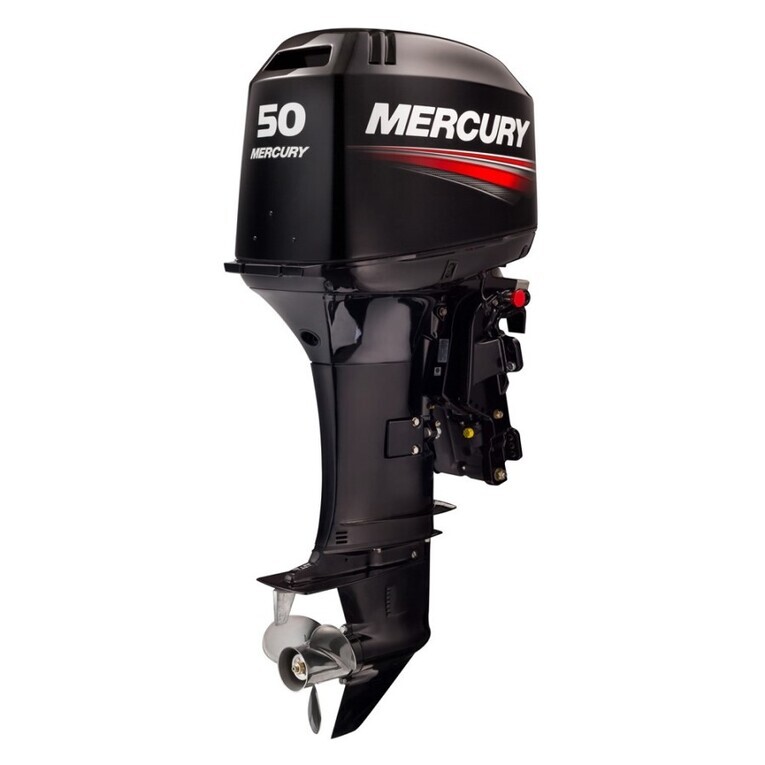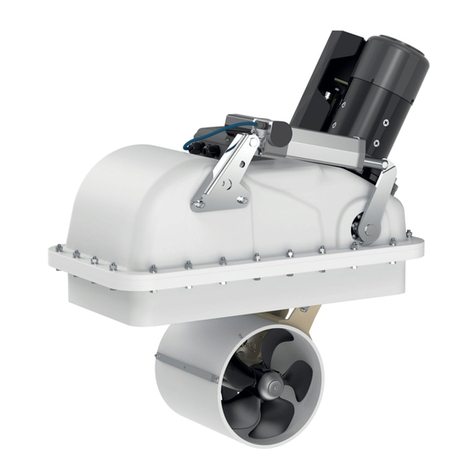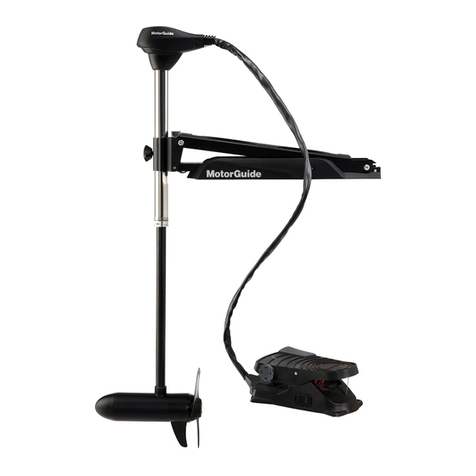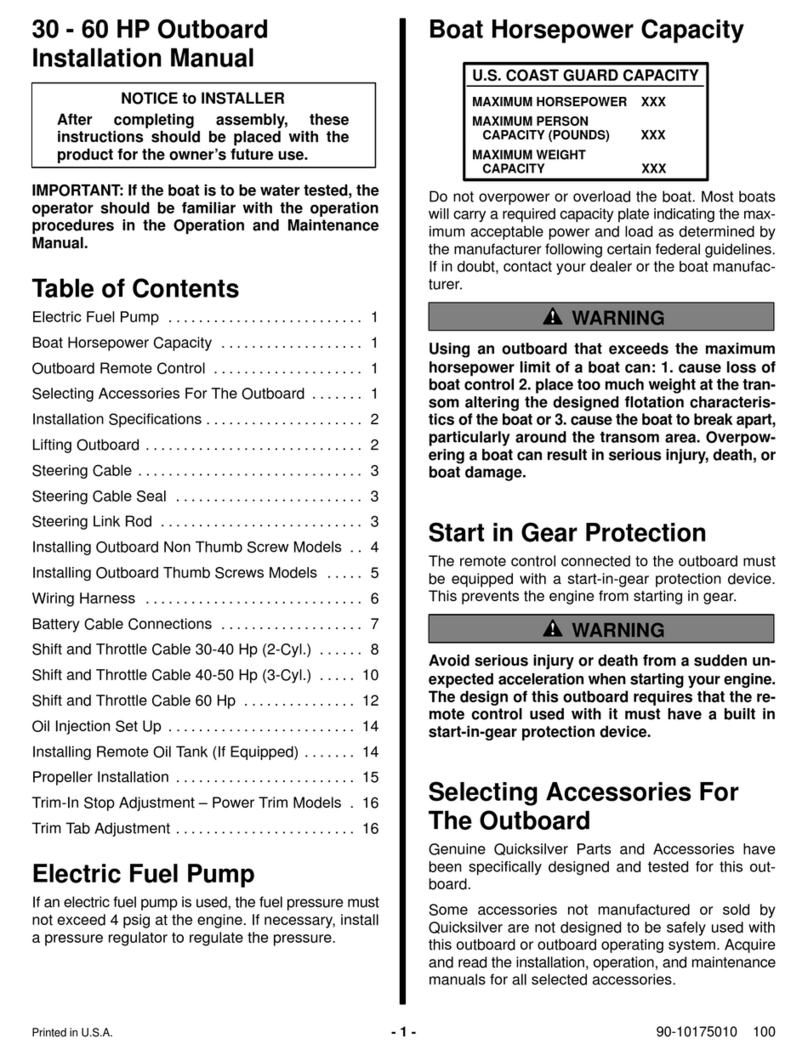
3
rope, extra fuel and oil, first aid kit,
flashlight, food and water, mirror, pad-
dles, tool kit, and transistor radio. Be
sure you are carrying the equipment
appropriate for your trip before launch-
ing.
• Never start the engine or let it run
indoors or where there is little or no
ventilation. Exhaust gas contains car-
bon monoxide, a gas that is colorless
and odorless and can cause death or
severe injury.
• Instruct your passengers on how to
operate the boat, how to deal with
emergencies, and how to operate
safety and emergency equipment.
• Do not hold onto the motor cover or
any other parts of your outboard motor
while getting on or off your boat.
• Ensure that everyone wears a PFD (Per-
sonal Flotation Device) on board.
• Never operate the boat while under the
influence of alcohol or other drugs.
• Distribute all weight load evenly in the
boat.
• Have all scheduled maintenance per-
formed. Consult your authorized
Suzuki marine dealer as required.
• Do not modify or remove any outboard
motor standard equipment. To do so
may make the motor unsafe to use.
• Learn and obey all applicable naviga-
tion rules.
• Pay attention to all weather forecasts.
Do not set out if weather is unsettled.
• Use extreme caution when purchasing
replacement parts or accessories.
Suzuki strongly recommends that you
use only genuine Suzuki replacement
parts/accessories or their equivalent.
Inappropriate or poor quality replace-
ment parts or accessories can create
unsafe operating conditions.
NOTE:
Mounting radio transceiver or navigational
equipment antennae too close to the engine
cowling can cause electrical noise interference.
Suzuki recommends that antennae be mounted
at least one meter (40 inches) away from the
engine cowling.
FOREWORD
The proper care and maintenance that your
outboard motor requires is outlined in this man-
ual. By following these instructions explicitly you
will ensure a long trouble-free operating life for
your outboard motor. This outboard motor also
conforms to the U.S Environmental Protection
Agency emission regulations which apply to
new outboard motors. The proper adjustment of
engine components is necessary for this out-
board motor to comply with the EPA regula-
tions. Therefore, please follow the maintenance
instructions closely to ensure emission compli-
ance. Your Suzuki dealer has experienced tech-
nicians that are trained to provide your outboard
motor with the best possible service with the
right tools and equipment.
All information in this manual is based on the
latest product information available at the time
of publication. Due to improvements or other
changes, there may be discrepancies between
this manual and your outboard motor. Suzuki
reserves the right to make production changes
at any time, without notice and without incurring
any obligation to make the same or similar
changes to outboard motor previously built or
sold.
This manual should be considered a per-
manent part of the outboard motor and
should remain with the outboard motor
when resold or otherwise transferred to a
new owner or operator. Please read this
manual carefully before operating your
new Suzuki and review the manual from
time to time. It contains important infor-
mation on safety, operation, and mainte-
nance.
